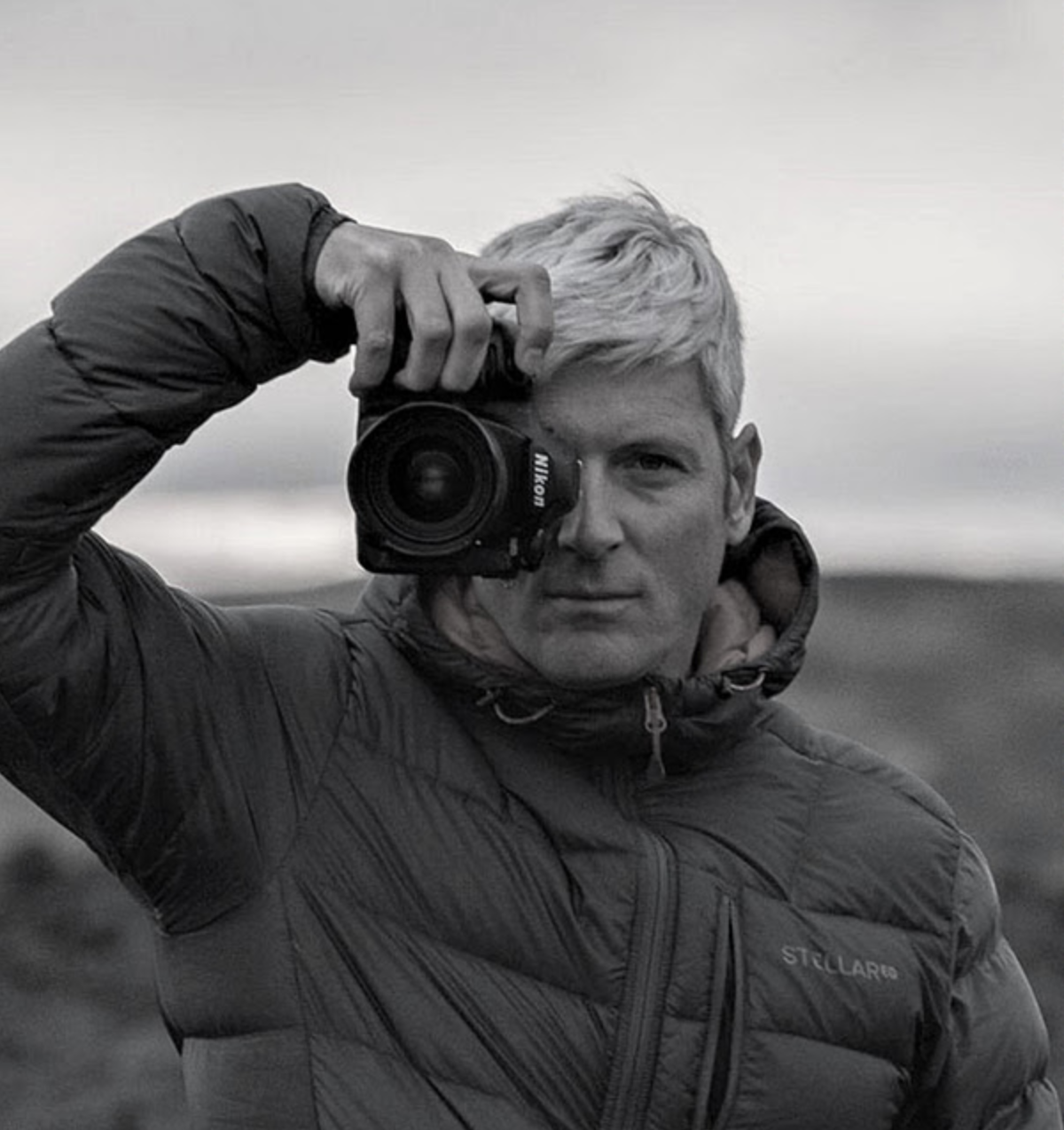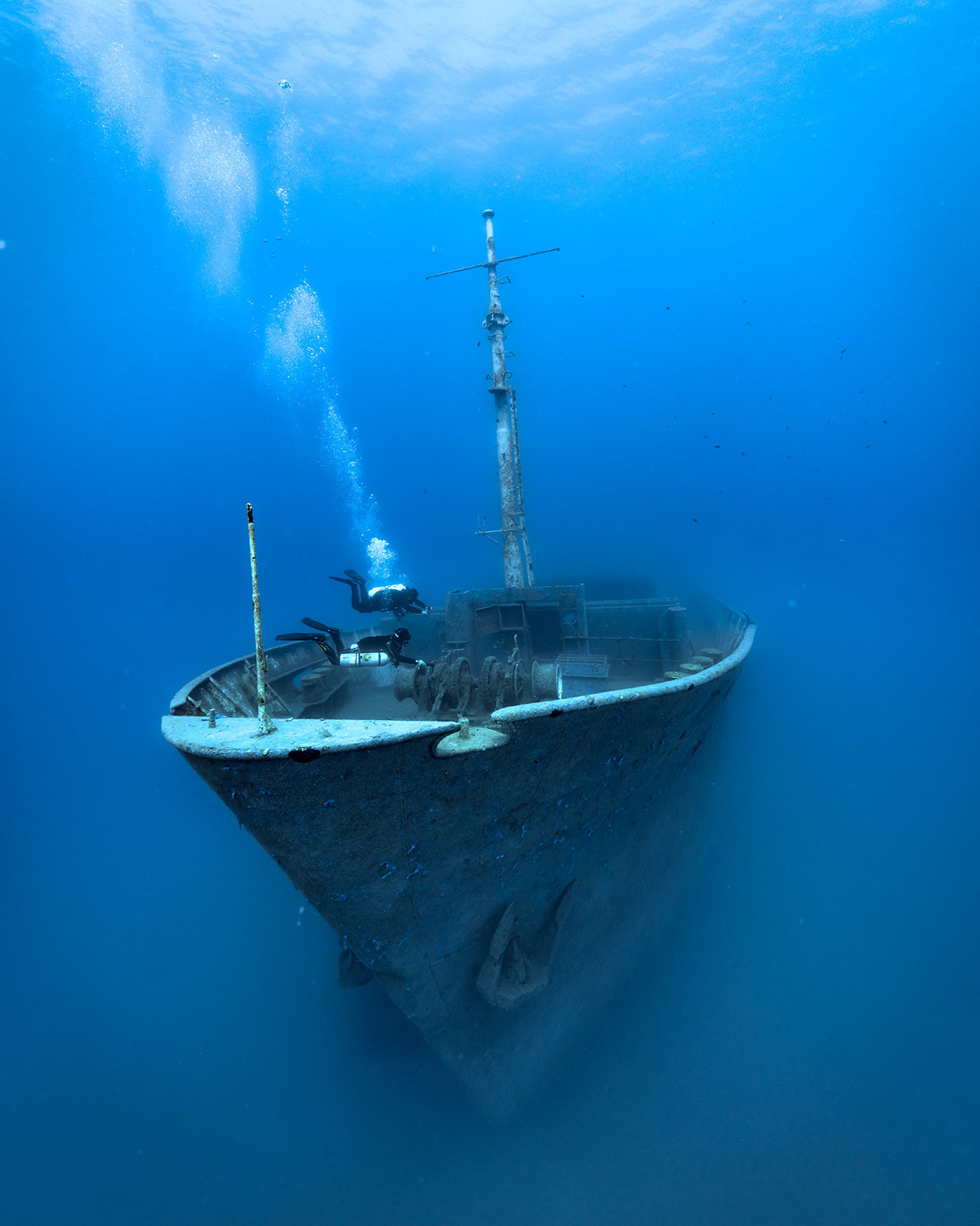In conversation with Alexander Dawson, deep dive photographer & UNIMATIC ambassador•
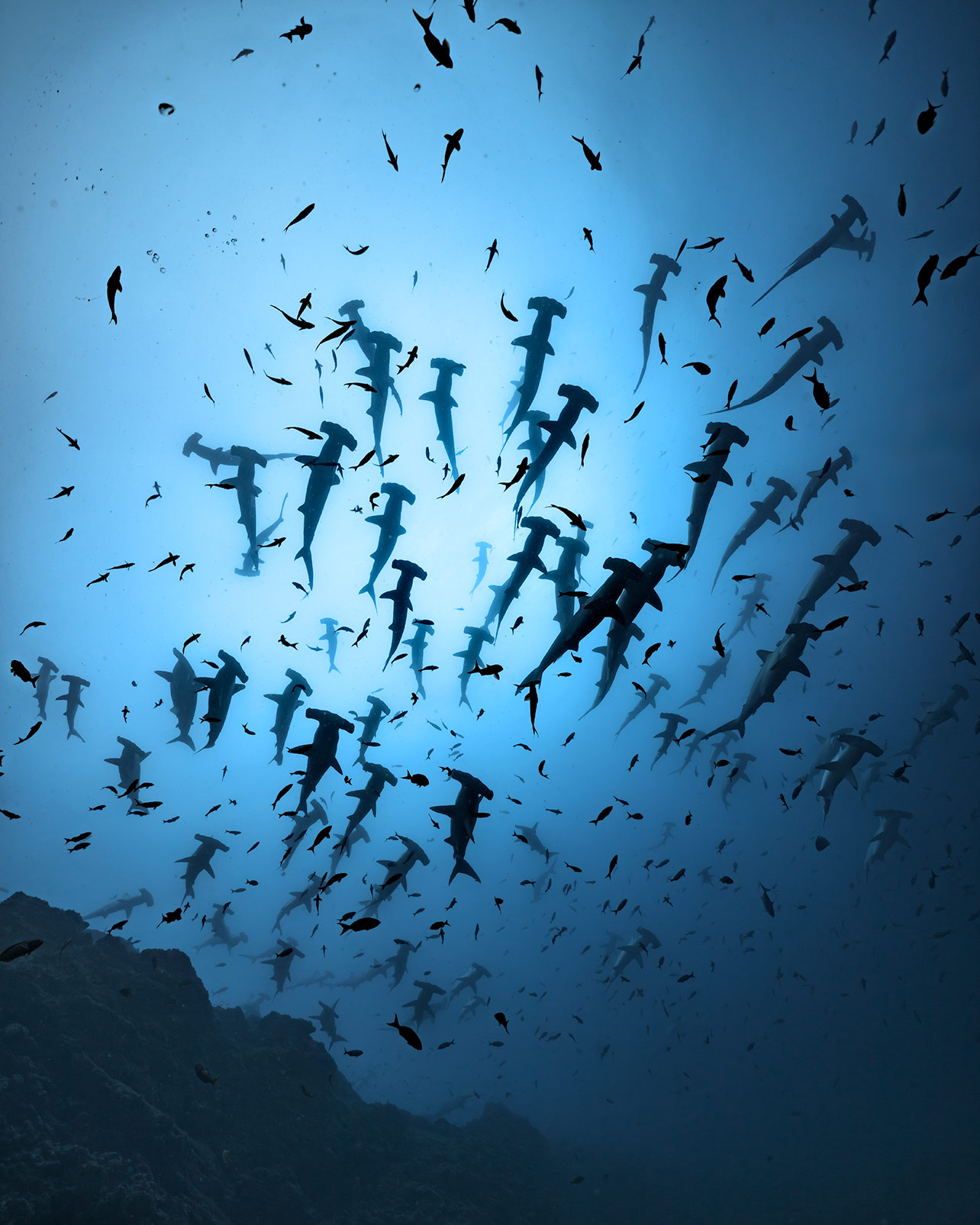
Can you tell us a bit about yourself, your work, and what led you to become an underwater photographer?
I started diving in 1993 and rented my first camera already after few months as a diver. It all started from the diving, I was so fascinated by the underwater world, that I wanted to share it with everybody that was not diving. That is basically how I started with photography, I learned underwater and in those days it was on film, so you were limited to 36 exposures per dive. Sometimes you had to make the priority whatever you are going to take all the pictures in the beginning of the dive, or maybe you will see something better at the end of the dive. It was very tricky to work with analogue cameras. Then in 2004 I switched to digital, so this first 11 year of shooting underwater was all film, so you didn’t know what you get till you develop the film. It was very difficult at times – you would go on a dive and developing the film, having to wait for one hour for the pictures then getting the results and then going: Damn, all bad!
What are the most challenging aspects of working underwater?
It is a lot of travelling, which is difficult, because it’s really boring to live in a suitcase. Everybody loves the idea of being on vacation all the time, but it’s quite hard to live on the road constantly.
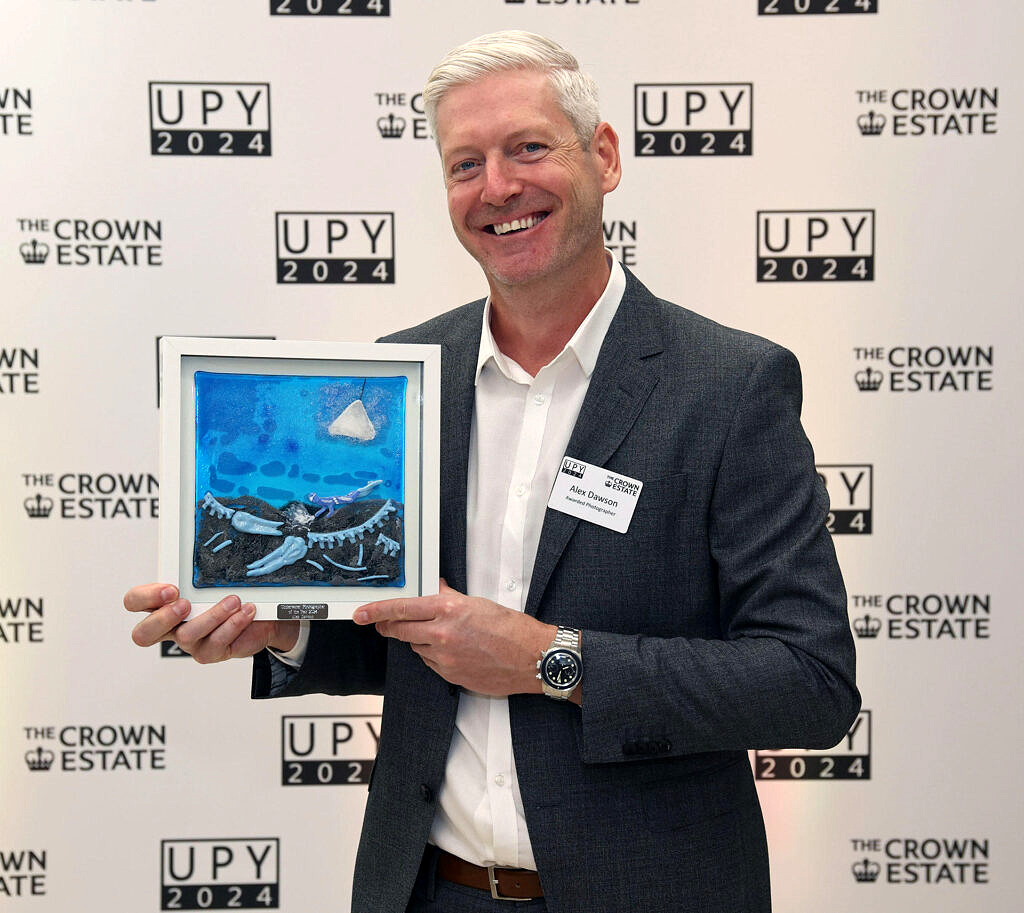
What are the depths of your dives?
In 2015, I started diving with a rebreather. It is a machine that is closed circuit where you’re reusing the same gas. And since then, my minimum depth from 40 meters, which is usually the maximum depth for recreational diving went to 70, 80, and my deepest is over 100. So very much deeper than before.
What is your favorite part of your job?
Extreme conditions are interesting for me because if you dive on a coral reef, there are millions of those images. Everybody’s seen it. There’s nothing really new to it. I mean, of course you can think out of the box and create new stuff, but that’s why I prefer deeper wrecks and caves and mines or Antarctica or Greenland or places that are remote, where fewer people dive. It just makes it more interesting also for the viewers, because people have seen everything with the internet these days. People want to see new stuff, and new stuff can only be shown by going places where people haven’t really been before or where no good photographer has been before.
Tell us more about your most memorable photograph. How did it come about?
It would be the picture of the whale bones in Eastern Greenland. It’s definitely a very epic moment. That picture is basically a whale carcasses cemetery but it has so much story to tell around it: how the hunt happens, how they use the skin, the blubber and the meat, and it’s just the skeletons left, and they dump them back in the same water in the same place.
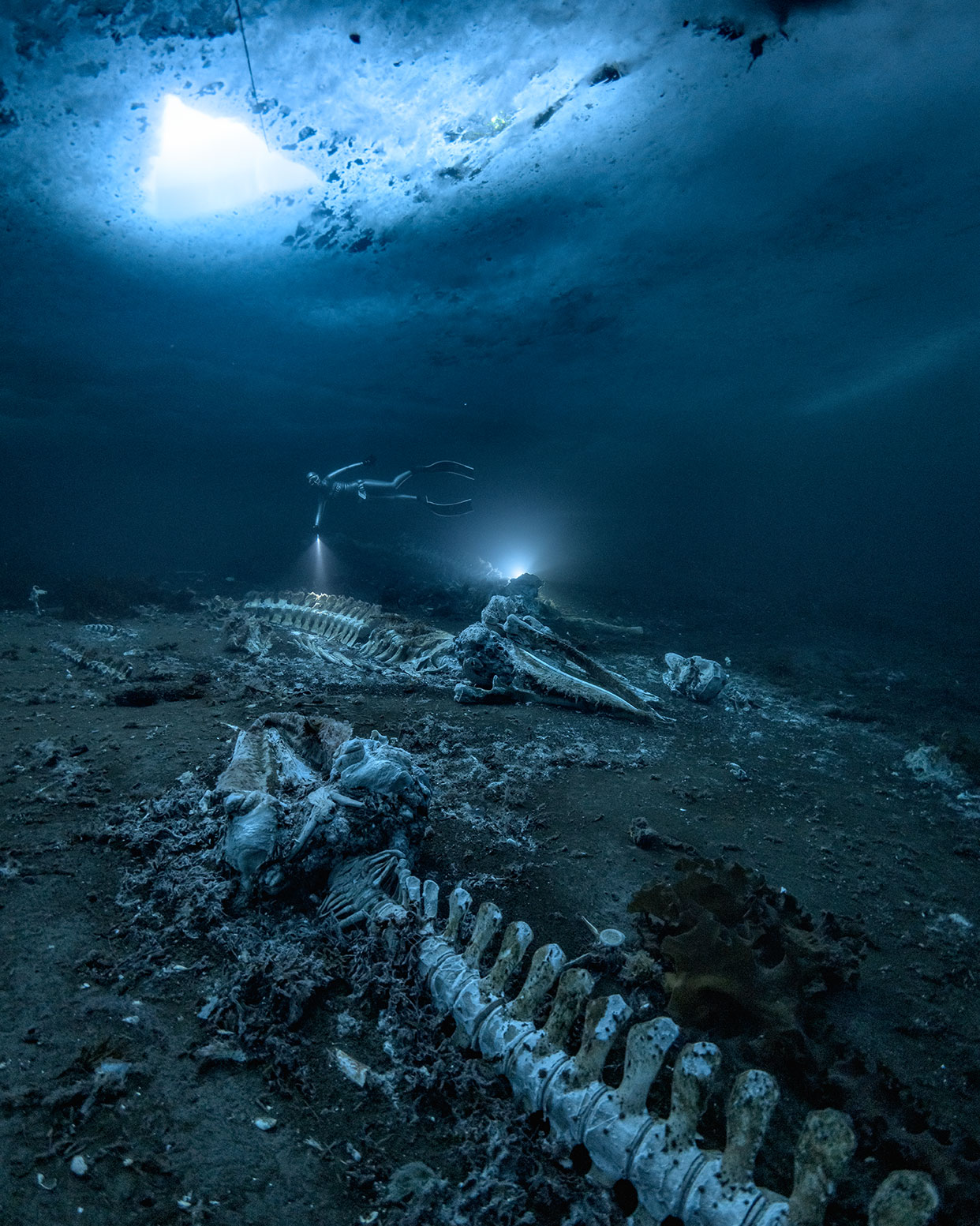
How much planning went into this photography?
I didn’t know about it until I arrived in Greenland. Usually we dive between the icebergs, but his year they had very no icebergs in the fjord. We needed some alternatives, we talked to one of the local people, asking for any other site that possibly could be of interest. They said, do you want to go to the whale bones? I didn’t have any thoughts about it but decided to give it a go. I talked a little bit with Anna, who’s the free diver modelling the images and said, just dive and swim slowly over the whale bones, back and forth and then back up in the hole. So we did that a couple of times, and we got really nice video and footage. There was no planning at all. We used our experience, have worked a lot together, and she knows what I like, what looks good on the picture. She knows where to be placed underwater. It’s super important to work with models that know you as a photographer, know your shooting style, and that we have many hours in the water together because it makes my life so much easier and the images and the outcome always going to be so much better.
What are the unexpected elements of your job?
I have to know some much about the weather, tides, seasons, marine life, travel logistics, connections, how to travel efficiently and how to feel well when you arrive there, and also find decent prices. The job is so multifaceted. There are so many levels of the job that people think it’s just the photography, but it expands into like 50 different businesses
How much gear do you usually carry with you?
For example, if I go to Mexico for cape diving, I will travel with over 130 kilos, which is my norm. It’s cameras, rebreathes, wetsuits, lots of lights. Sometimes there are underwater vehicles so that we can move faster and cover more ground within the cave. There is so much equipment that needs to be carried to get great pictures.
Do you prefer to explore caves or wrecks?
I like them equally, but I think there’s still no cave or mine that I’ve dived where I felt, this is better than the best wrecks. The wrecks are better dives. But the problem with them is that they’re always very deep, so it’s quite advanced diving.
What are the features that you look for in a dive watch?
During my dives, I use two computers that are built into the rebreather. And then I use UNIMATIC watches purely for good looks. That is how I use it. Because the instruments that we are using, they’re so advanced. They are proper computers, there’s no dive watch in the world that can compete with them. It’s two different worlds.
Find out the best Diver’s companion. With lume infused ceramic bezel insert and dual lume feature, the ref. U1S-PD5 can withstand any adventure. Individually tested up to 500mt water resistant.
What is the aspect that made you choose UNIMATIC against any other watch brand?
I like anything that’s more minimal, I like clean designs in general. My photography is quite minimalistic. I try to shoot quite minimalistic because it’s just the style I like. Less is more.
And finally a recommendation for amateurs, best place worth visiting in Italy?
Everywhere in the Mediterranean Sea is nice. There’s the Secca del Papa in Sardinia, which is an underwater mountain, there are probably hundreds of similar places. But nevertheless I dive all around there, and I think that it is super cool. Another great spot is in Arenzano, to go see the wreck of the MT Haven. The ship is huge and was a crude oil tanker that caught fire in the shore. They had to pull it out from the harbour so that other ships wouldn’t start burning. You can find some really extreme, crazy footage from that fire.
[wpcsi_shoppable_image id=’120435′]
Follow Alexander Dawson here:
To stay always up to date with our articles and watch drops, please subscribe to our newsletter below.

